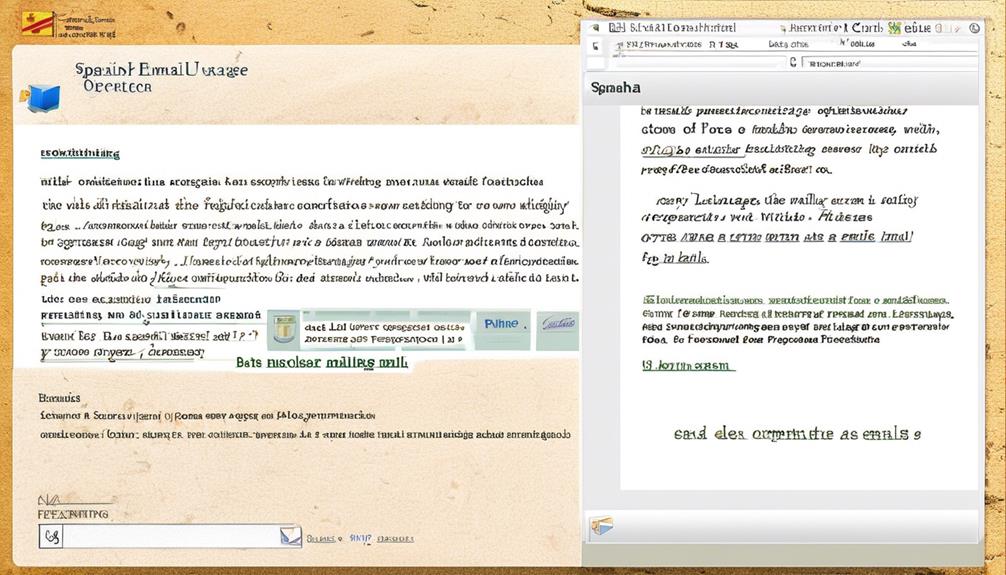Venturing into the digital realm to engage with a counselor can be likened to orchestrating a symphony – every element comes together in perfect harmony to form a cohesive whole.
But how do we strike the perfect chord with our words in an email to a counselor? The answer lies in the art of crafting a professional subject line that captures attention and respect, setting the stage for a meaningful exchange.
Join me as we explore the subtle nuances of using a respectful salutation, introducing ourselves clearly, and articulating our questions directly, culminating in a graceful conclusion that leaves a lasting impression.
Key Takeaways
- Use a clear and concise subject line that includes your name and reason for contacting the counselor.
- Address the counselor with a respectful salutation and appropriate professional title.
- Clearly introduce yourself, stating your name, purpose of the email, and desire for counseling.
- Articulate your questions and needs directly and explicitly.
Crafting a Professional Subject Line
Crafting a professional subject line is essential for effectively communicating the purpose of your email to your counselor and prompting a timely and informed response. When reaching out to your adviser via email, it’s crucial to use a clear subject line that includes your name and the reason for contacting them.
This not only helps in establishing a professional tone but also enables the adviser to quickly understand the nature of your inquiry. Additionally, incorporating relevant keywords related to your email’s content in the subject line can grab the adviser’s attention and aid in sorting and prioritizing emails.
A concise and informative subject line serves as a snapshot of your email’s purpose, allowing the adviser to gauge the importance and relevance of your message at a glance. It’s important to avoid using vague or overly casual language in the subject line to maintain a sense of professionalism and respect for the adviser’s time and attention.
Using a Respectful Salutation and Title

Address your counselor with a respectful salutation and the appropriate professional title, ensuring to maintain a tone that’s both professional and considerate.
When crafting the salutation for your first email to a therapist, it’s essential to use the appropriate professional title and maintain a respectful tone. Begin your email with ‘Dear [Title] [Last Name]’ or ‘Hello [Title] [Last Name]’ to show respect and professionalism.
Avoid using informal or personal salutations like ‘Hey’ or ‘Hi [First Name]’ as they may come across as too casual for the professional relationship you’re seeking.
Always use the counselor’s professional title, such as ‘Dr.’ or ‘Professor,’ to address them in the salutation, showing proper recognition of their expertise and qualifications.
Introducing Yourself Clearly
Hello Dr. [Last Name],
I hope this email finds you well. My name is [Your Name], and I’m reaching out to you as the first step in seeking your guidance and support as a counselor.
I’m a [Your Year] student majoring in [Your Major] at [Your University], and I’ve come to a point where I feel the need to seek professional counseling to address certain challenges I’ve been facing.
I’ve heard positive feedback about your expertise in [Counselor’s Specialty, if applicable], and I believe that your experience could greatly assist me in navigating through these difficulties.
I would like to discuss [Briefly mention the issue or reason for reaching out to the counselor]. I’m hoping to gain insight and strategies to help me overcome these obstacles and make the most of my academic and personal life.
I understand the value of your time and expertise, and I assure you that I’m committed to actively engaging in the counseling process.
Thank you for taking the time to read my email, and I appreciate your consideration.
I look forward to the possibility of working with you.
Warm regards,
[Your Name]Articulating Your Questions Directly

In our email to the counselor, let’s express our questions and concerns directly to ensure clear communication and facilitate the guidance we seek.
When reaching out to our therapist, it’s important to be explicit about our needs and to articulate our inquiries in a straightforward manner. By articulating our questions directly, we can avoid any miscommunication and ensure that our therapist fully understands the support we’re seeking.
Using direct language in our email will help us to convey our queries clearly and succinctly. It’s crucial to avoid beating around the bush and instead communicate our concerns and needs in a direct and transparent manner.
By being explicit about the assistance we require and the specific support we need, we can facilitate a more productive interaction with our therapist. Therefore, we should directly ask for the information or advice we need from our counselor, ensuring that our email is clear, direct, and purposeful.
This approach will enable our therapist to provide the most effective guidance and support.
Concluding With Appreciation and Politeness
We sincerely appreciate your time and expertise in guiding us through our challenges, and we’d like to express our gratitude for your support and understanding.
As we conclude our email, we want to ensure that our appreciation for your assistance is clearly conveyed. Your insights have been invaluable to us, and we’re truly grateful for the effort you have put into helping us. Your dedication to addressing our concerns hasn’t gone unnoticed, and we’re thankful for the thoughtful guidance you have provided.
Please let’s know if there’s anything else we can provide or any further information that would be helpful. We value your input and look forward to hearing from you.
Once again, we extend our heartfelt thanks for your time and support.
Best regards.
Frequently Asked Questions
How Do You Address a Counselor in an Email?
We address a counselor in an email with a professional salutation and their professional title.
It’s important to create a clear subject line with our name and reason for reaching out.
When introducing ourselves in the email, we ensure that our questions or reasons for contacting are clear.
We always end the email with thanks and a professional farewell salutation.
How Do You Write a Formal Email to an Advisor?
When writing a formal email to an advisor, we should always maintain a professional tone and be concise while addressing our questions or concerns.
It’s important to use proper grammar, introduce ourselves clearly, and express gratitude at the end.
Including necessary details and following any specific protocols provided by the advisor or institution can help ensure a successful and respectful interaction.
How Do You Start an Email to a Guidance Counselor?
We understand the importance of initiating an email to a guidance counselor with professionalism and clarity. It’s vital to clearly express your intentions and provide context for your inquiry.
Beginning with a clear subject line and a professional salutation can set the right tone for the email.
Introducing yourself and clearly stating your questions or reasons for reaching out will ensure effective communication.
Thanking the counselor and ending with a farewell salutation is a thoughtful and courteous way to conclude the email.
How Do I Email a Counselor for a Schedule Change?
We should start the email with a clear subject line, introduction, and a polite request for a schedule change.
We need to clearly state the reason for the change and provide any necessary details.
It’s essential to end the email with gratitude and a respectful farewell.
Our writing should be concise and respectful to convey our request professionally and effectively.
Conclusion
We must remember that clear and respectful communication is essential when reaching out to a counselor. By following the outlined steps and guidelines, we can ensure that our emails are professional and effective.
It’s important to be concise, polite, and to provide necessary details for the counselor to understand our questions or concerns. Taking these steps will help us build a positive and productive relationship with our counselor.









